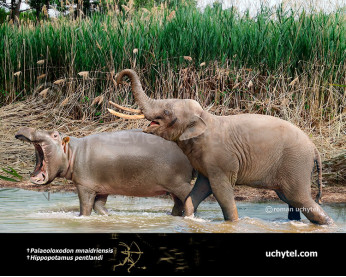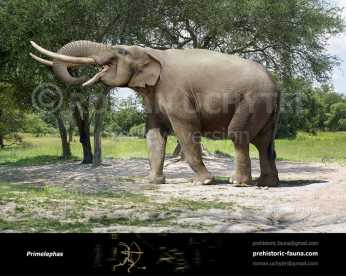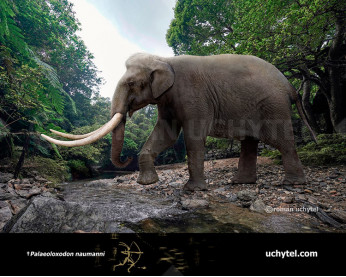Palaeoloxodon namadicus
306306Asian straight-tusked elephant (Palaeoloxodon namadicus Falconer & Cautley, 1846)
Order: Proboscidea
Family: Elephantidae
Dimensions: length - 7m (with tusks), height - 5 m, weight - 20000 kg
Temporal range: during the Pleistocene epoch (Asia)
Palaeoloxodon namadicus or the Asian straight-tusked elephant, was a species of prehistoric elephant that ranged throughout Pleistocene Asia, from India (where it was first discovered) to Japan. It is a descendant of the straight-tusked elephant. Some authorities regard it to be a subspecies of Palaeoloxodon antiquus, the straight-tusked elephant, due to extreme similarities of the tusks. Their skull structure was also different from that of a modern elephant. Several studies have attempted to estimate the size of the Asian straight-tusked elephants, as well as other prehistoric proboscideans, usually using comparisons of thigh bone length and knowledge of relative growth rates to estimate the size of incomplete skeletons.
One partial skeleton found in India in 1905 had thigh bones that likely measured 165 centimetres when complete, suggesting a total shoulder height of 4.5 metres for this individual elephant.
Two partial thigh bones were found in the 19th century and would have measured 160 cm when complete. A fragment from the same locality was said to be almost a quarter larger; volumetric analysis then yields a size estimate of 5.2 metres tall at the shoulder and 22 tonnes weight. This makes P. namadicus the largest land mammal known, surpassing the largest indricotheres.
Payment
You may use multiple payment methods to buy image such as credit cards, PayPal and bank transfer.
Asian straight-tusked elephant (Palaeoloxodon namadicus Falconer & Cautley, 1846)
Order: Proboscidea
Family: Elephantidae
Dimensions: length - 7m (with tusks), height - 5 m, weight - 20000 kg
Temporal range: during the Pleistocene epoch (Asia)
Palaeoloxodon namadicus or the Asian straight-tusked elephant, was a species of prehistoric elephant that ranged throughout Pleistocene Asia, from India (where it was first discovered) to Japan. It is a descendant of the straight-tusked elephant. Some authorities regard it to be a subspecies of Palaeoloxodon antiquus, the straight-tusked elephant, due to extreme similarities of the tusks. Their skull structure was also different from that of a modern elephant. Several studies have attempted to estimate the size of the Asian straight-tusked elephants, as well as other prehistoric proboscideans, usually using comparisons of thigh bone length and knowledge of relative growth rates to estimate the size of incomplete skeletons.
One partial skeleton found in India in 1905 had thigh bones that likely measured 165 centimetres when complete, suggesting a total shoulder height of 4.5 metres for this individual elephant.
Two partial thigh bones were found in the 19th century and would have measured 160 cm when complete. A fragment from the same locality was said to be almost a quarter larger; volumetric analysis then yields a size estimate of 5.2 metres tall at the shoulder and 22 tonnes weight. This makes P. namadicus the largest land mammal known, surpassing the largest indricotheres.

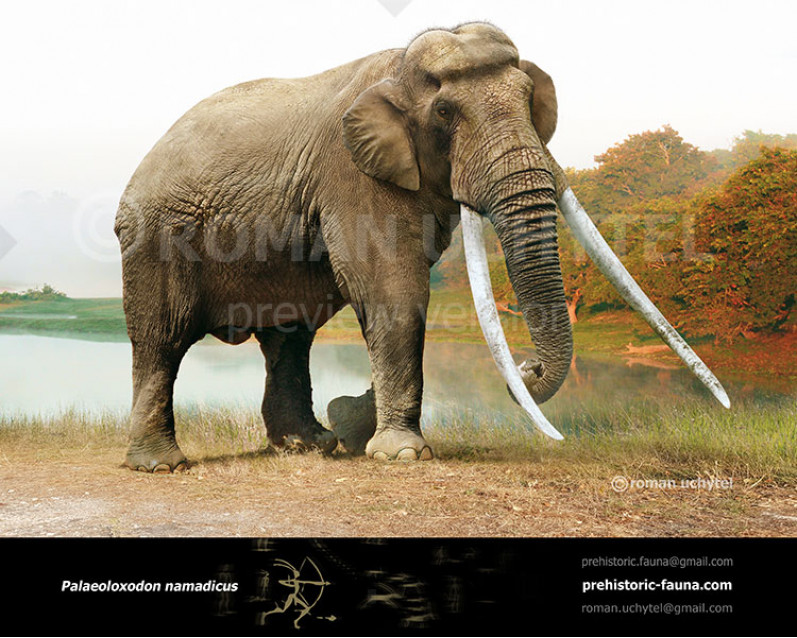
-797x638.jpg)
3-797x638.jpg)
2-797x638.jpg)
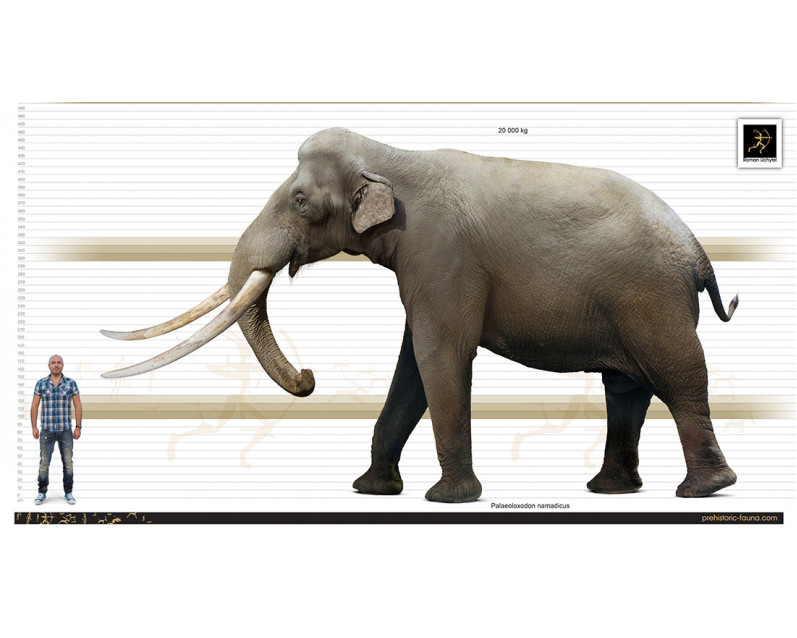
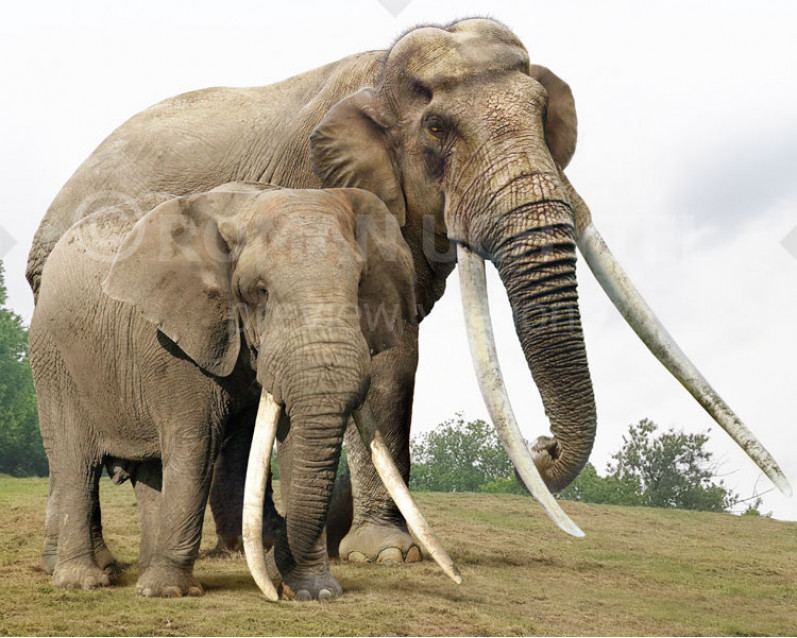

-70x56.jpg)
3-70x56.jpg)
2-70x56.jpg)


-346x277.jpg)
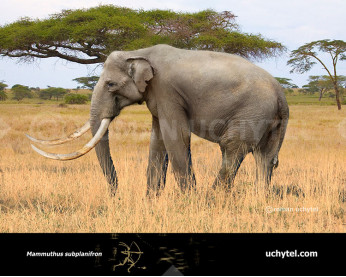

-cypriotes-346x277.jpg)
